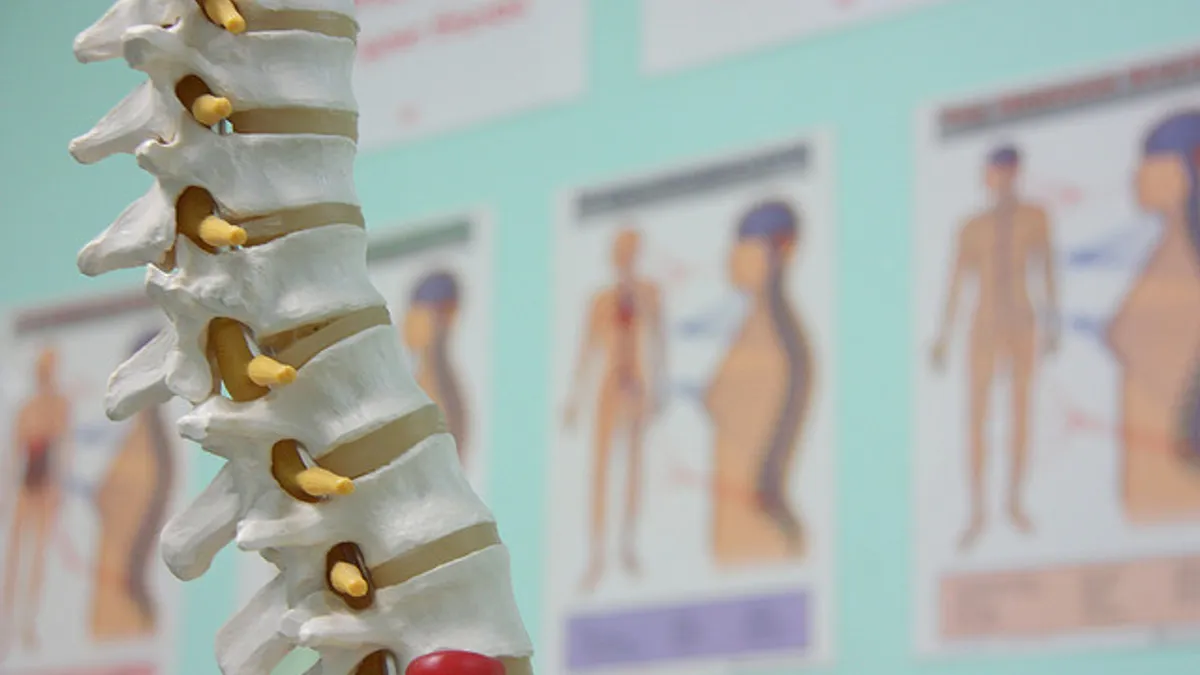Dive Brief:
- NuVasive’s Gregory Lucier, who is stepping down as chief executive on Nov. 5, told analysts he expects the spine device industry to consolidate around four or five bigger, well-capitalized players as healthcare systems slim down their vendor lists amid a shift to value-based purchasing with measurable clinical outcomes.
- Speaking on NuVasive’s third-quarter earnings call Tuesday, the outgoing CEO said the company is moving out of belt-tightening mode to accelerate spending on certain R&D efforts, sales force increases and infrastructure upgrades, motivated by improving spine market conditions and data suggesting an uptick in hospital elective surgery volumes.
- The company reported third-quarter net income of $15.9 million, or 30 cents a share, down from $33.5 million, or 64 cents, in the same period a year ago. On a non-GAAP basis, NuVasive reported income of $29.5 million, or 56 cents a share, compared with $26.6 million, or 51 cents a share.
Dive Insight:
NuVasive earlier this month announced J. Christopher Barry, president of Medtronic’s surgical innovations business, will succeed Lucier in the CEO role. Lucier will remain chairman of NuVasive’s board.
The management transition comes as NuVasive positions itself to take advantage of what it sees as the beginnings of a healthier spine market, following several weak years marked by insurer pushback on procedures. On the earnings call, Lucier said the market is now growing at a rate of about 1%, with NuVasive growing faster.
NuVasive reported revenue growth of 9.8% to $271.3 million in the third quarter vs. a year ago, bolstered by new technology introductions that are driving share gains in the U.S. spinal hardware business. The company’s U.S. case volumes were up more than 7% in the quarter.
“Our company and its growth premise is on taking market share,” Lucier said. “We are taking share in this industry now again, strongly.”
NuVasive competes against medical device heavyweights Medtronic, Johnson & Johnson, Stryker and Zimmer Biomet, in addition to numerous smaller players, in the spinal fusion market. As healthcare systems consolidate their vendor lists, NuVasive expects to be among the suppliers still standing, with the ability to offer a complete system of technologies for the operating room, Lucier said.
“It's why I chose to further invest right now. And we think it's going to lead to what has hopefully been long-awaited consolidation in this industry around four to five bigger spine companies, and we'll be one of them,” the CEO said.
NuVasive in August announced a technology partnership with Siemens to improve visualization of the anatomy during spine implant placement.
The project will involve integrating NuVasive’s new Pulse surgical automation platform with Siemens Healthineers’ mobile 3D imaging for quality assurance during surgery.
Among NuVasive’s R&D priorities is robotics, Lucier said. Incoming CEO Barry has an extensive background in robotics, and Verb Surgical CEO Scott Huennekens recently joined NuVasive’s board, Lucier noted. Verb was formed in 2015 by Google and Johnson & Johnson to develop surgical platforms including advanced robotics.
Lucier said NuVasive would reveal more details about its robot technology in the coming months. “We have been working behind the scenes to further disrupt spine with a completely new approach to robotics,” he said.
The accelerated investments will come at a cost, at least in the near term. NuVasive reduced its non-GAAP operating margin outlook for 2018 to a range of 15.0% to 15.5% from the previous forecast of 16.7%. The company also bumped up its full-year revenue forecast to a range of $1.105 billion to $1.110 billion, up from $1.095 billion to $1.105 billion.










